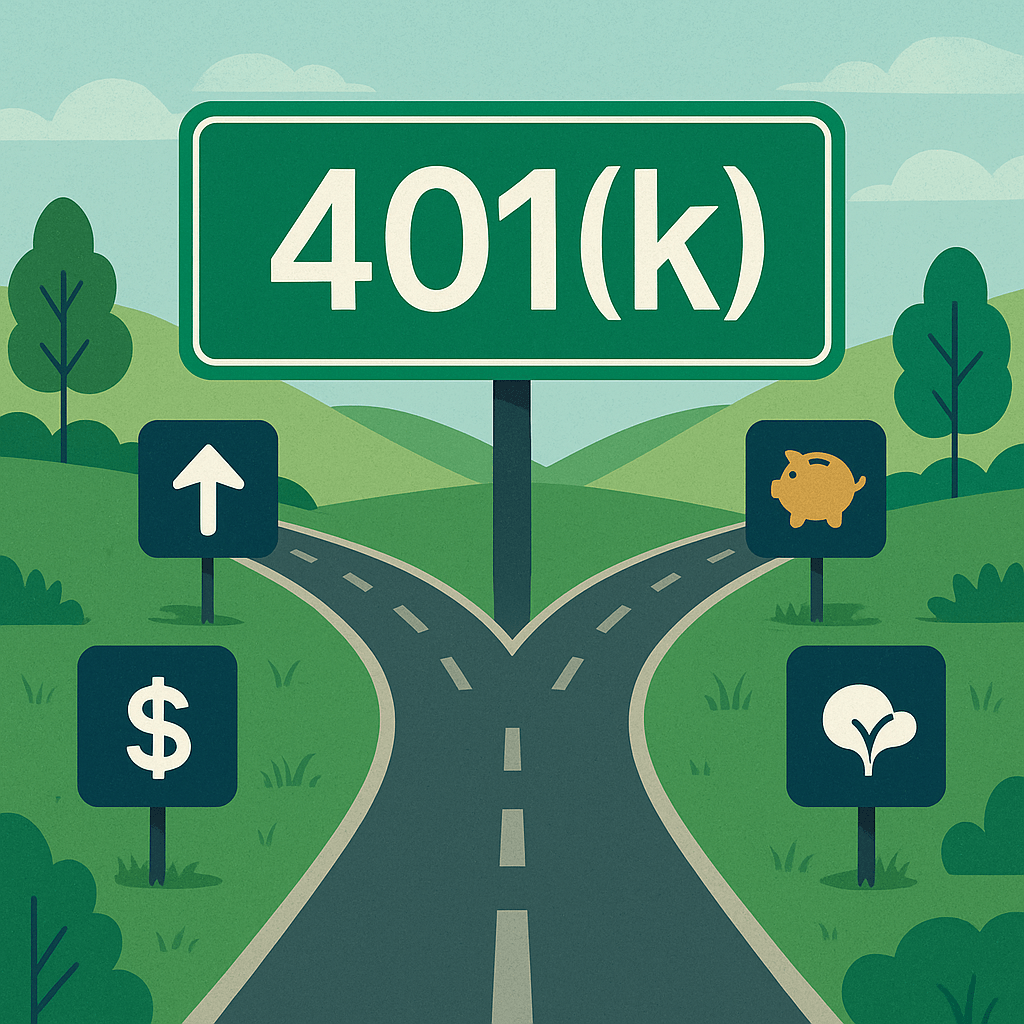If there’s one thing we can agree on, it’s that a 401(k) can be a homerun for building retirement savings. Between its tax advantages, high contribution limits, and the potential for employer matching, it’s hard to argue against its status as a powerhouse tool in the financial planning toolbox.
But what happens to that tool when you switch jobs? Do you know what your options are or what to avoid?
Whether you’re in the middle of a career pivot or simply thinking ahead, knowing how to handle an old 401(k) is an underrated decision that could turn costly if handled improperly. Let’s walk through the choices you’ll want to consider.

Option 1: Keep Your Current 401(k)
In many cases, you can leave your 401(k) exactly where it is. This is typically the path of least resistance, logistically speaking. But it’s important that you don’t assume it’s always available; some employers have policies that require former employees to roll over or withdraw funds once they leave.
It’s worth calling HR or the plan administrator to confirm what your former employer allows. Even if this is an option, you’ll want to keep track of login credentials, plan details, and ensure your investment mix still aligns with your goals. An old 401(k) doesn’t mean forgotten money.
Option 2: Roll Over to a New 401(k)
If your new employer offers a 401(k) plan, you might be able to roll your old account into it. This helps keep your savings consolidated under one roof and allows you to continue enjoying the familiar benefits of a 401(k) – including high contribution limits and potential matching.
But, there is a catch. You’re limited to the investment options offered by your new plan. If you’re particular about where your money’s invested, this might feel a bit restricting. Still, for many, the simplicity of consolidation is worth it. Not to mention it’s much more reassuring when your account performance can be tracked in one place.
Option 3: Roll Over to an IRA
If you want more control and investment flexibility, an IRA might be the better fit. IRAs typically offer a broader range of investment options than most 401(k)s, and you won’t be locked into your new employer’s plan lineup.
The trade-off? Lower annual contribution limits. And if you’re still a ways out from retirement, that may impact how quickly you can grow your savings moving forward.
Option 4: Withdraw the Money
Let’s get this out of the way: yes, you can cash out your 401(k). But should you?
Generally, this is a last-resort option. Withdrawals before age 59½ are typically taxed as income and hit with an early withdrawal penalty. That means losing a chunk of your hard-earned savings before they’ve had a chance to mature.
That said, life happens. If you’re facing a financial emergency, it’s still on the table. Just make sure you’re aware of the true cost before tapping into those funds.
So… What’s the Right Move?
Like most things in financial planning, the answer is: it depends. Your timeline, goals, and current financial picture all play a role. That’s why understanding the “what” is just the first step. Deciding the “why” behind your move is where the strategy kicks in.
Navigating your 401(k) after a job change is just one piece of the retirement puzzle. Whether it’s managing tax exposure, reevaluating your budget, or mapping out your ideal retirement age, it’s all connected. And that’s where having a plan – and a partner – can make all the difference.
There’s a world of strategy beyond your old 401(k), and we’re here to help you explore it.
We are an independent firm helping individuals create retirement strategies using a variety of investment and insurance products to custom suit their needs and objectives. This material is intended to provide general information to help you understand basic retirement income strategies and should not be construed as financial advice. Investing involves risk, including the potential loss of principal. No investment strategy can guarantee a profit or protect against loss in periods of declining values.